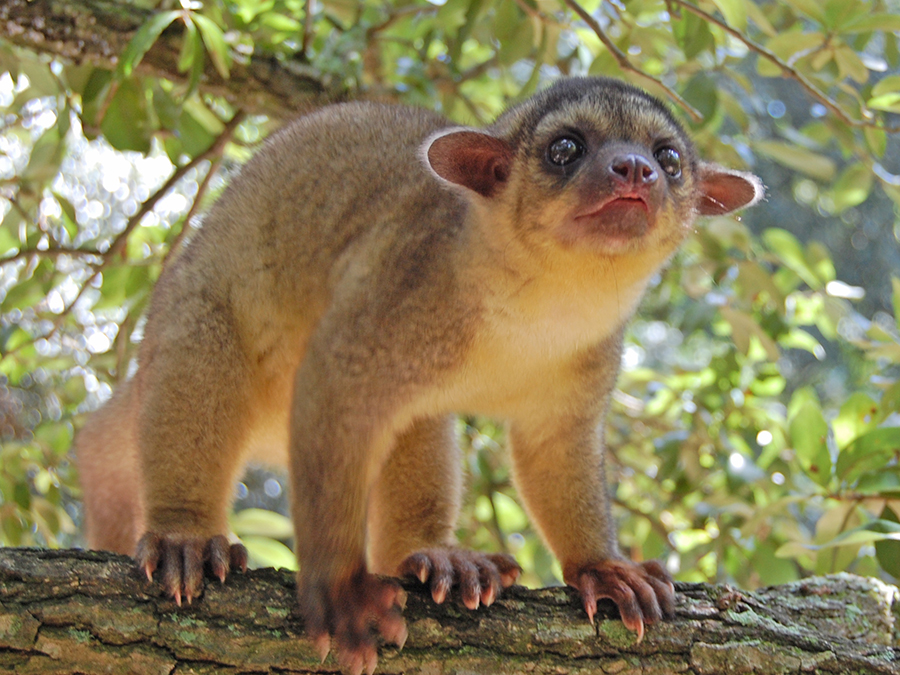In the lush jungles of Belize, hidden amidst the verdant canopy, resides a creature of enchanting allure—the Kinkajou, affectionately known as the honey bear. With its fluffy fur, big eyes, and a tail that seems straight out of a fantasy tale, the Kinkajou embodies the whimsical beauty of the tropical forests. Yet, beyond its adorable appearance lies a fascinating world of adaptation, diet preferences, and endearing behaviors that make it a beloved inhabitant of Belize’s diverse ecosystem. Join us on a journey to discover the enigmatic charm of the Kinkajou and unravel the secrets of this captivating honey bear.
Unveiling the Charm: Exploring the Adorable Nature of the Kinkajou
Nestled amidst the emerald green canopies of Belize, the Kinkajou stands out as a symbol of natural charm and innocence. Its endearing appearance, reminiscent of a blend between a teddy bear and a small monkey, immediately captures the hearts of those fortunate enough to catch a glimpse of this elusive creature.
One of the most striking features of the Kinkajou is its large, round eyes, which give it an expression of perpetual curiosity and wonder. These expressive eyes, coupled with its small, rounded ears, add to its overall cuteness factor, making it a favorite among wildlife enthusiasts and photographers seeking to capture its playful demeanor.
The Kinkajou’s fur further adds to its allure, with a soft and fluffy texture that invites gentle caresses. Its coat varies in color from golden brown to reddish-brown, often adorned with patches of lighter fur on its face, giving it a distinct and memorable appearance.
Despite its resemblance to a bear, the Kinkajou is more closely related to raccoons and coatis, belonging to the Procyonidae family. This evolutionary lineage is reflected in its agile movements and nimble climbing skills, allowing it to navigate the intricate branches of the forest canopy with ease.
One of the Kinkajou’s most enchanting features is its prehensile tail, which serves as a multifunctional tool. This long, grasping appendage aids in climbing, balancing, and even manipulating objects, showcasing the creature’s adaptability to its arboreal habitat.
Beyond its physical attributes, the Kinkajou possesses a playful and social nature, often engaging in frolicsome activities with fellow Kinkajous or other arboreal creatures. Its diet primarily consists of fruits, nectar, and occasionally small invertebrates, highlighting its role as an essential pollinator and seed disperser in the tropical ecosystem.
In essence, the Kinkajou’s charm lies not only in its adorable appearance but also in its role as a vital component of Belize’s rich biodiversity, adding a touch of magic to the vibrant tapestry of the rainforest.
A Tail of Adaptation: Understanding the Prehensile Marvel of the Kinkajou
The Kinkajou’s prehensile tail is a marvel of evolution, perfectly adapted to its arboreal lifestyle in the dense jungles of Belize. This remarkable appendage serves a multitude of functions, showcasing the ingenuity and adaptability of this fascinating creature.
One of the primary roles of the Kinkajou’s prehensile tail is aiding in locomotion. As it navigates the intricate network of branches and vines, the Kinkajou uses its tail like a fifth limb, gripping and wrapping around supports with remarkable dexterity. This tail-assisted movement allows the Kinkajou to traverse even the most challenging terrain with agility and grace.
Beyond locomotion, the prehensile tail plays a crucial role in balance and stability. Whether leaping between branches or hanging upside down to reach a tempting fruit, the Kinkajou’s tail acts as a counterbalance, ensuring precise and controlled movements. This remarkable balance is essential for survival in the canopy, where agility and quick reflexes are paramount.
The versatility of the prehensile tail extends to its role in foraging and feeding. Equipped with sensitive tactile hairs known as vibrissae, the Kinkajou’s tail helps it explore and locate food sources with remarkable precision. This sensory adaptation allows the Kinkajou to detect ripe fruits, nectar-rich flowers, and even small insects hidden amidst foliage, showcasing its resourcefulness as an opportunistic feeder.
Moreover, the Kinkajou’s tail serves as a tool for manipulation and exploration. Whether delicately plucking a fruit from a branch or investigating an unfamiliar object, the Kinkajou utilizes its tail’s gripping ability to interact with its environment effectively. This adaptability highlights the Kinkajou’s intelligence and problem-solving skills, contributing to its success as a highly specialized arboreal mammal.
In essence, the Kinkajou’s prehensile tail is a testament to the intricate adaptations that enable creatures to thrive in their natural habitats. Its multifunctional nature underscores the evolutionary brilliance of this charming honey bear, adding another layer of fascination to its captivating existence in Belize’s tropical forests.
Sweet Tooth Secrets: Delving into the Diet and Behavior of Belize’s Kinkajou
The Kinkajou’s diet is a delightful reflection of its arboreal lifestyle and tropical habitat, marked by a penchant for sweet treats and a fascinating foraging strategy. Exploring the dietary preferences and behaviors of these honey bears unveils a world of culinary delights and ecological importance.
At the heart of the Kinkajou’s diet are fruits, which constitute a significant portion of its daily intake. In the lush rainforests of Belize, the Kinkajou enjoys a diverse array of fruits, ranging from figs and bananas to mangoes and guavas. Its keen sense of smell and taste guides it to ripe and nutritious fruits, showcasing its selective feeding habits and adaptability to seasonal variations in food availability.
Apart from fruits, the Kinkajou exhibits a fondness for nectar, a sugary liquid found in flowers. With its long, slender tongue adapted for probing deep into blossoms, the Kinkajou indulges in floral nectar, contributing to pollination processes as it feeds. This mutualistic relationship with flowering plants highlights the Kinkajou’s role as a vital pollinator in the rainforest ecosystem.
In addition to fruits and nectar, the Kinkajou supplements its diet with small invertebrates, such as insects and larvae. This opportunistic feeding behavior allows it to obtain essential proteins and nutrients while adding variety to its culinary repertoire.
The Kinkajou’s foraging strategy is as intriguing as its diet, characterized by nocturnal activities and meticulous exploration of its surroundings. Under the cover of darkness, it ventures into the canopy, using its agile movements and sensory acuity to locate food sources. Its nimble fingers and keen eyesight aid in navigating the intricate foliage, showcasing its adeptness as a nocturnal hunter-gatherer.
Overall, the Kinkajou’s dietary preferences and foraging behaviors not only reflect its adaptation to the tropical rainforest but also highlight its ecological importance as a seed disperser, pollinator, and contributor to the intricate web of life in Belize’s vibrant ecosystem.
Final Thoughts
The Kinkajou, Belize’s honey bear, encapsulates the essence of enchantment and ecological significance within its furry embrace. As we delve into its world of charm, adaptation, and culinary delights, a deeper appreciation for this enigmatic creature emerges.
From its adorable appearance to its prehensile marvel of a tail, the Kinkajou stands as a testament to nature’s ingenuity and evolutionary prowess. Its ability to thrive in the treetops of Belize’s rainforests showcases the delicate balance between adaptation and specialization, painting a portrait of resilience in the face of environmental challenges.
Moreover, the Kinkajou’s diet, centered around fruits, nectar, and occasional insects, underscores its role as a vital link in the rainforest’s intricate food web. As a pollinator and seed disperser, it contributes to the maintenance of biodiversity, ensuring the health and resilience of its habitat.
Beyond its ecological contributions, the Kinkajou’s playful behaviors and social interactions add a layer of joy and wonder to the forest canopy. Its nocturnal forays and agile movements exemplify nature’s endless capacity for exploration and adaptation, inviting us to marvel at the wonders of the natural world.
In conclusion, the Kinkajou invites us to embrace curiosity, appreciation, and conservation. Through understanding and celebrating these charismatic creatures, we not only gain insight into the marvels of evolution but also reaffirm our commitment to preserving the delicate balance of ecosystems that sustain life on Earth. The Kinkajou’s story is a reminder of the beauty and complexity of nature, urging us to tread lightly and protect the habitats that nurture such extraordinary beings.




